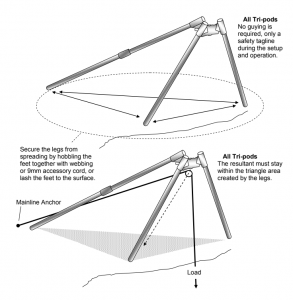
As we found during our T Method conversations, there are numerous Ts… T1, T2 ect… The same applies to understanding resultants. Each line that intersects with a pulley or change of direction, is considered a component (C1, C2 ect…). When one component meets another, an angle is formed. This new angle has it’s own magnitude of force and a new direction. This determines “a degree of angle”…which then corresponds to what is called a “Resultant”. For more on this topic… Go to Elements of Rigging at Rigging Lab Academy.com
When two components come together we have now created an angle. The resultant is the force vector that is created by the joining of these two components.
To determine the resultant draw a parallelogram from the given angle. Than draw a new line (component) from the original angle (resultant) to its opposite angle of the parallelogram. By comparing the length of the resultant component to the components of the angle, we can easily see which component of this system is producing the greatest force simply by determining, which is the longest.
When components of rope go through a pulley, the pulley equalizes the components of rope and renders them equal. The resultant (in this case, the pulley) will always seek the location halfway between the two rope components.
The center of any tensioned pulley will always point to the exact location and direction of the resultant force at work on the associated anchor.
Again, the resultant of any pulley will find the middle point between the legs of rope going in and coming out of the pulley. The use of the parallelogram still works well in determining the resultant force, its direction and magnitude.
As always… rig safely and once the foundations are understood… be creative!
Peace on your days…
Lance
Online Education and Membership
Get your Gear Here…. Become an RRG Pro today and save.